At 20,310 feet, Mt.
McKinley is the highest point in North America.
They call it Denali now.
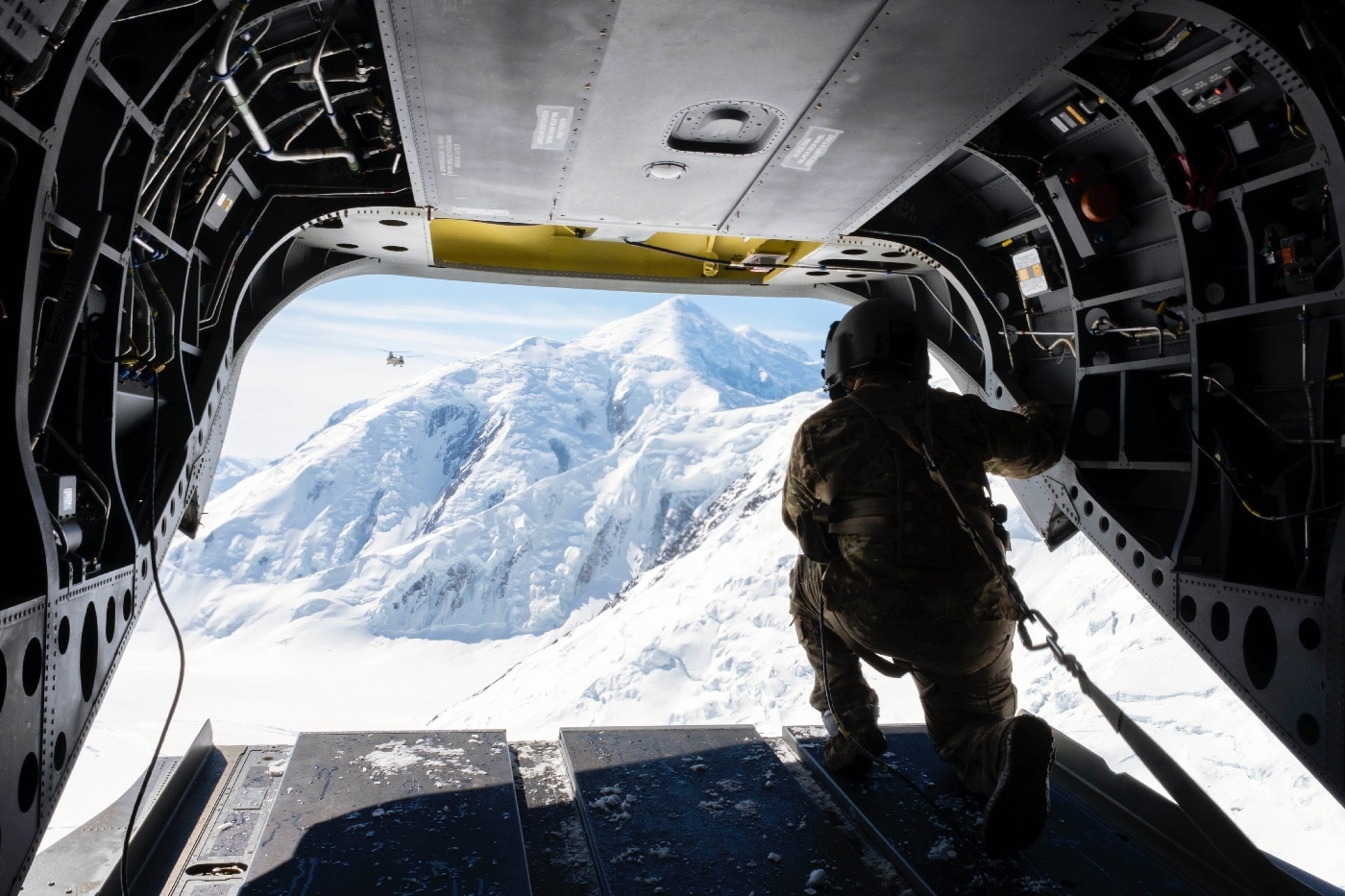
A soldier from the Sugar Bears of B Company, 1st Battalion, 52nd Aviation Regiment, kneels on the ramp of a Chinook while flying over Denali National Park and Reserve, Alaska. Image: Benjamin Wilson/U.S. Army
This was quite an unnatural space for a helicopter.
Needless to say, I was impressed by the bravery required to be a pilot of this helicopter.
The Aircraft
For the HART mission, we utilized otherwise unremarkable Boeing CH-47D heavy-lift helicopters.
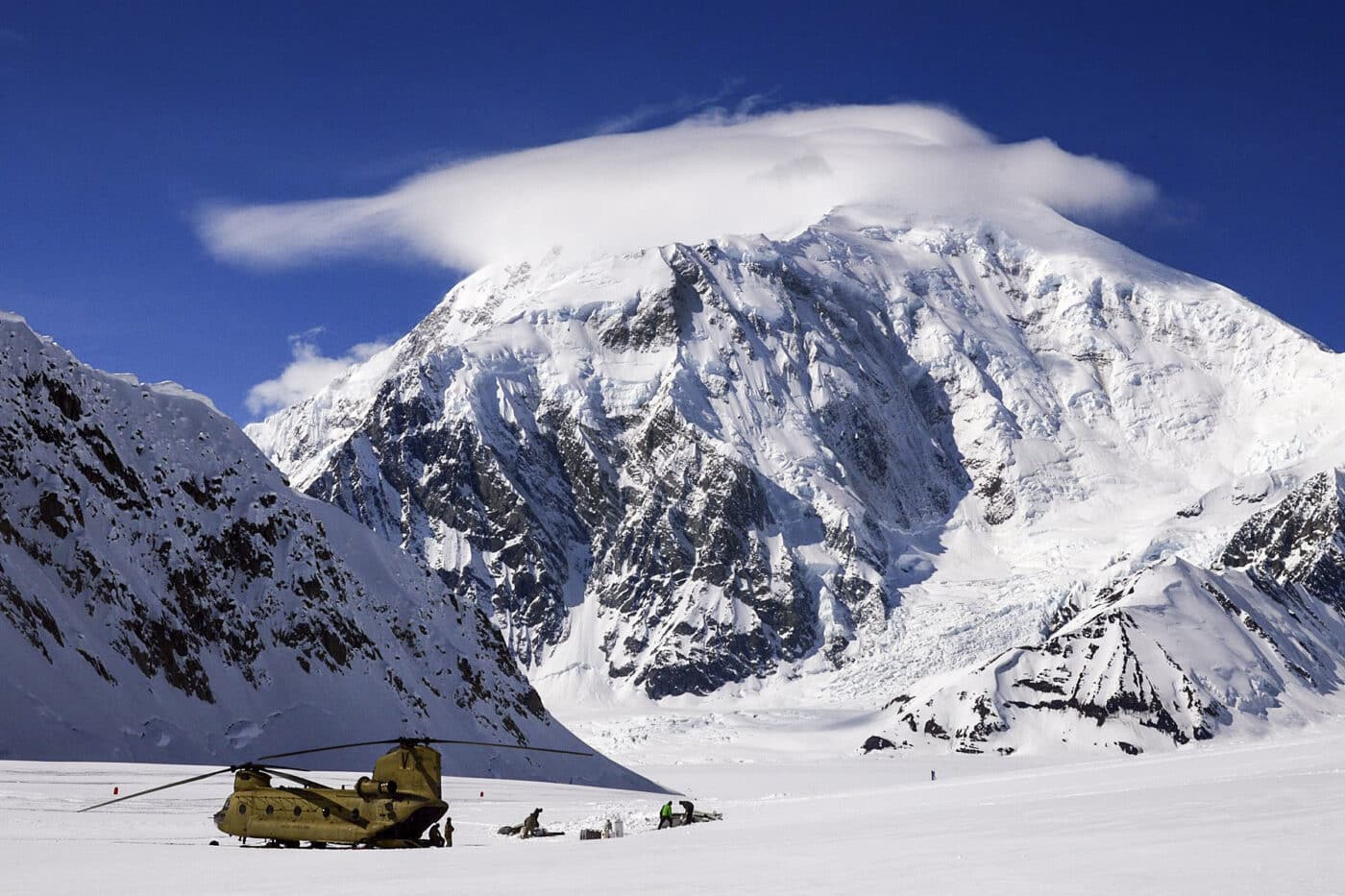
Mount Foraker towers above Sugar Bear soldiers as they offload supplies from a CH-47F Chinook helicopter after landing on Kahiltna Glacier in Denali National Park. Image: John Pennell/U.S. Army
Our crewmembers also had walkaround bottles that would keep them conscious while moving about the cargo compartment.
The max gross weight for a CH-47D is 50,000 pounds.
Its twin Lycoming turboshaft engines put out an aggregate 9,000 shaft horsepower.
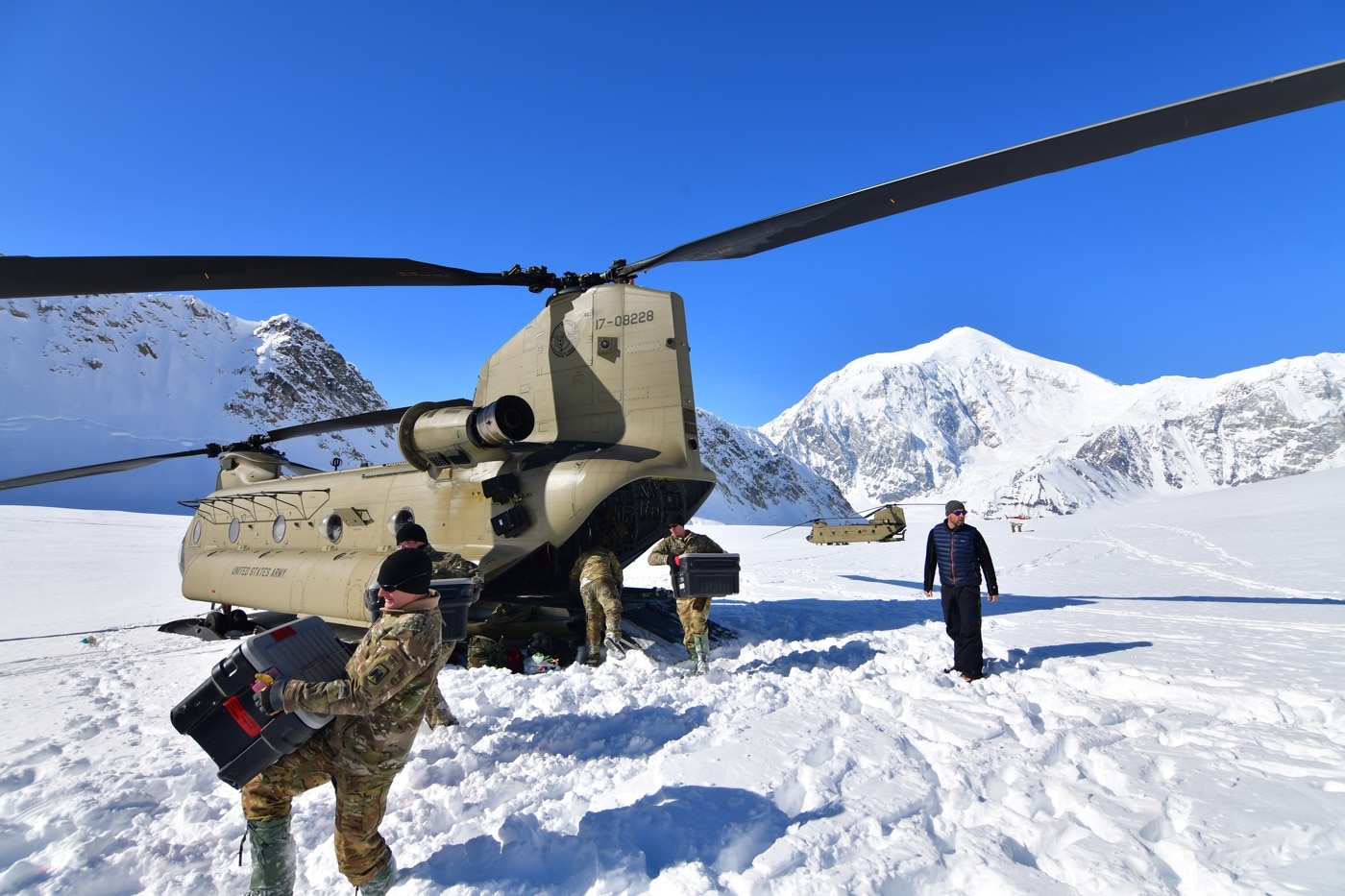
Soldiers unload equipment from Chinooks when setting up the base camp at the 7,200-foot level of Kahiltna Glacier for the 2021 climbing season. Image: John Pennell/U.S. Army
It is an immensely powerful machine.
However, at 21,000 feet the Chinook becomes a big fat pig.
Great care had to be taken to plan maneuvers well in advance when the air was that thin.
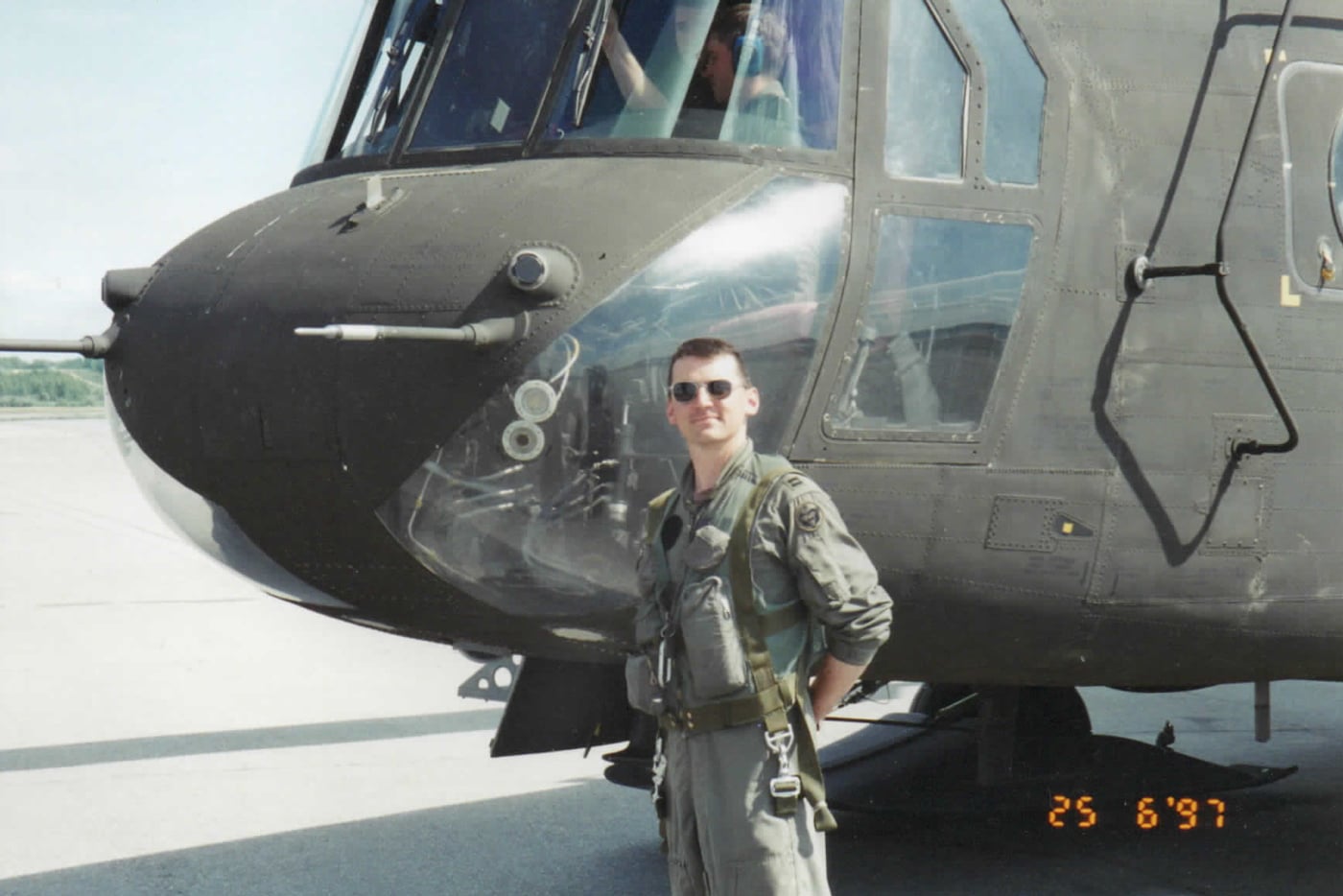
The author stands next to his Chinook in 1997. A pilot in the U.S. Army, the author was one of the prestigious Sugar Bears.
Those sorts of altitudes are terribly unforgiving.
However, thusly configured the big Chinook would reliably get us there and back.
While the peak of Everest is higher, you dont have to climb as far to get there.
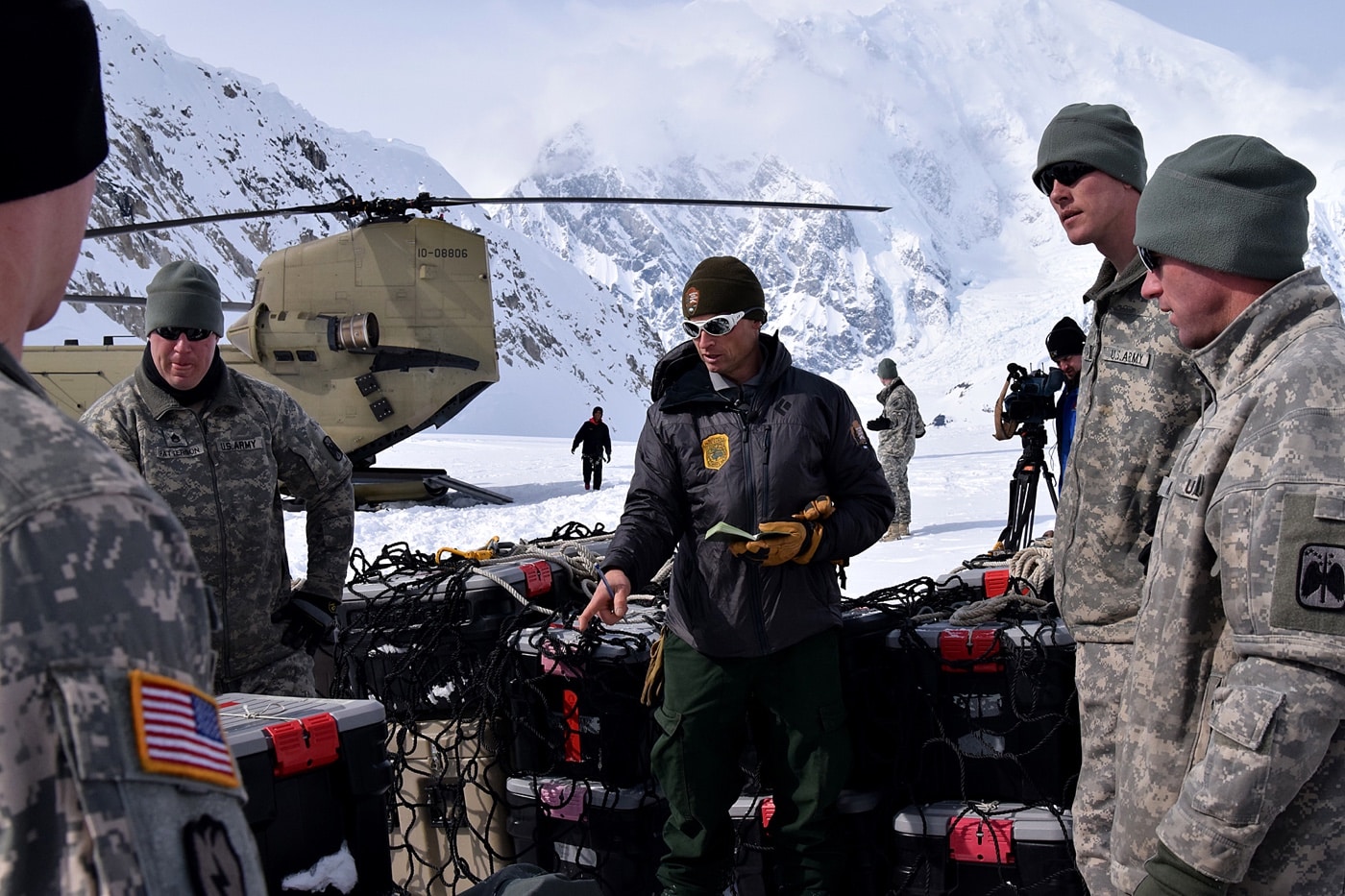
U.S. Park Ranger Joe Reichert and soldiers from the 52nd Aviation Regiment inventory equipment at the Kahiltna Glacier base camp on Mount McKinley. Image: John Pennell/U.S. Army
Each year about 1,200 climbers attempt the ascent.
Roughly half of them make it.
Folks die on that rock all the time.
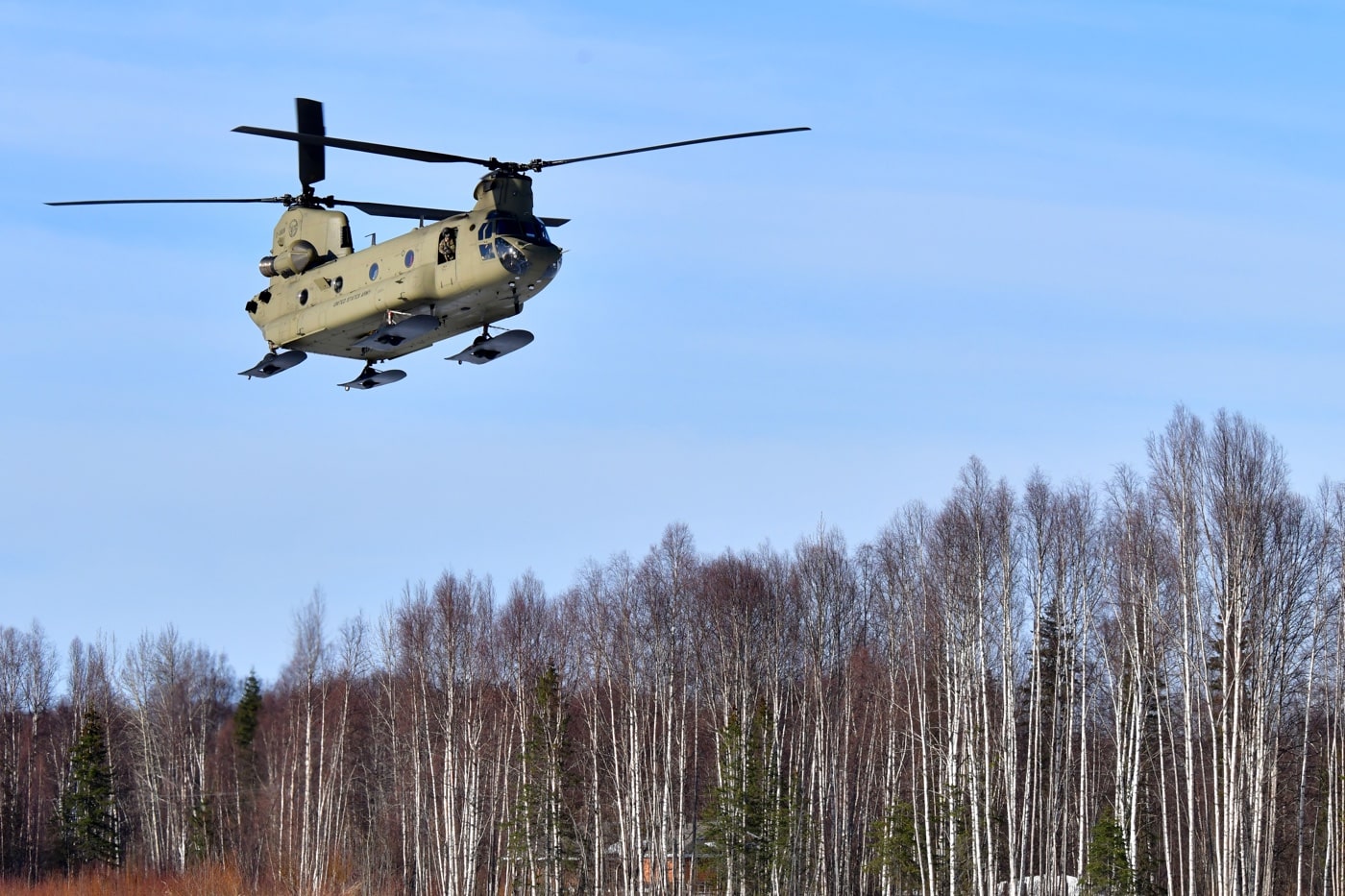
A CH-47F Chinook prepares to land in Talkeetna, Alaska, during a training mission. Note the special skids for improved snow performance. Image: John Pennell/U.S. Army
There have been 96 fatalities on the mountain since the first successful ascent in 1913.
The low base camp is at 7,200 feet on the Kahiltna glacier.
The high base camp is at 14,200 feet.
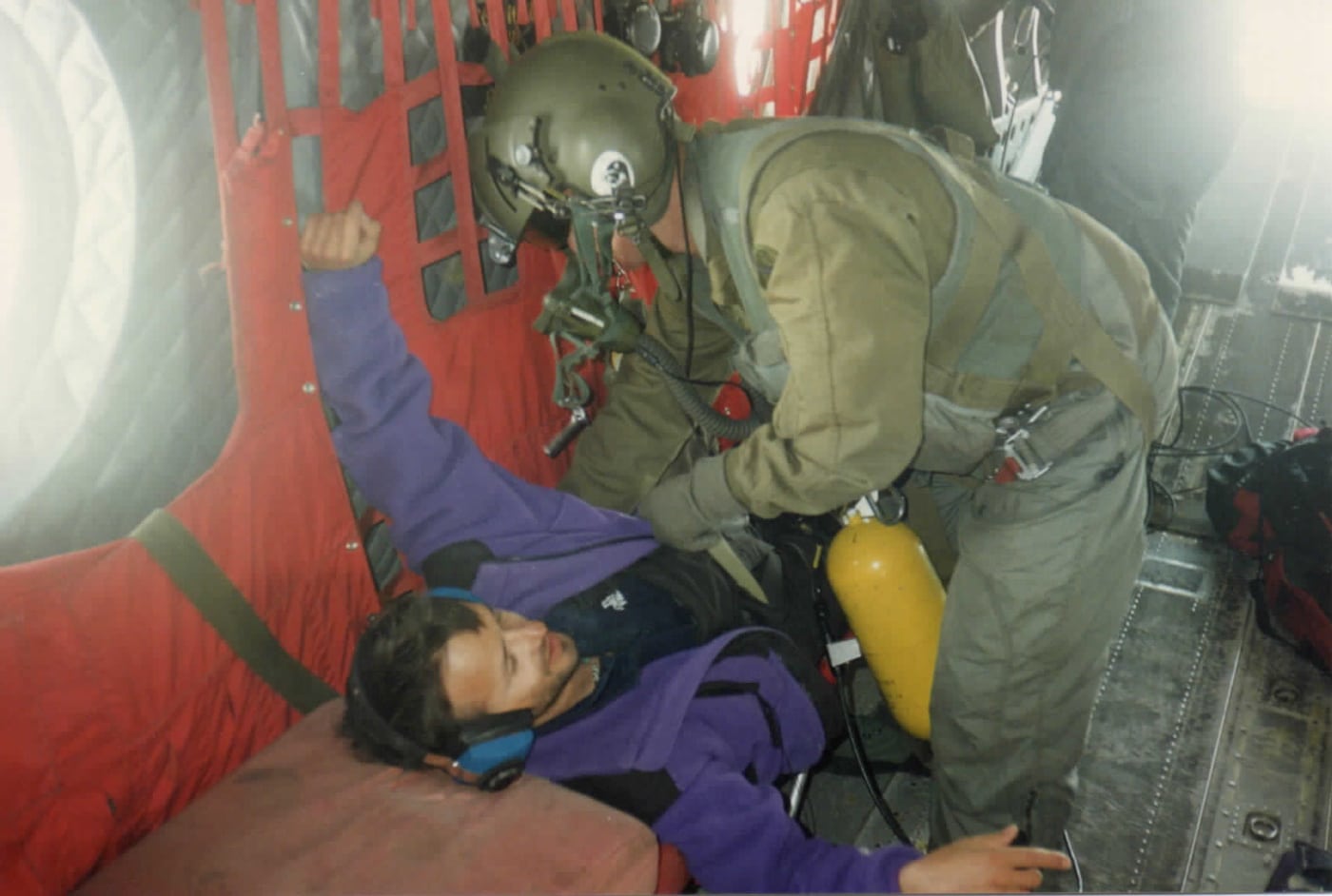
An injured mountain climber is loaded on the author’s Chinook during a high-riskmedical evacuationfrom Denali Pass. Note the portable oxygen system used by crew members.
The HART team also retrieves everything at the end.
These Army Chinooks also cover the gaps that the small civilian helicopter cannot.
Denali makes its own weather.
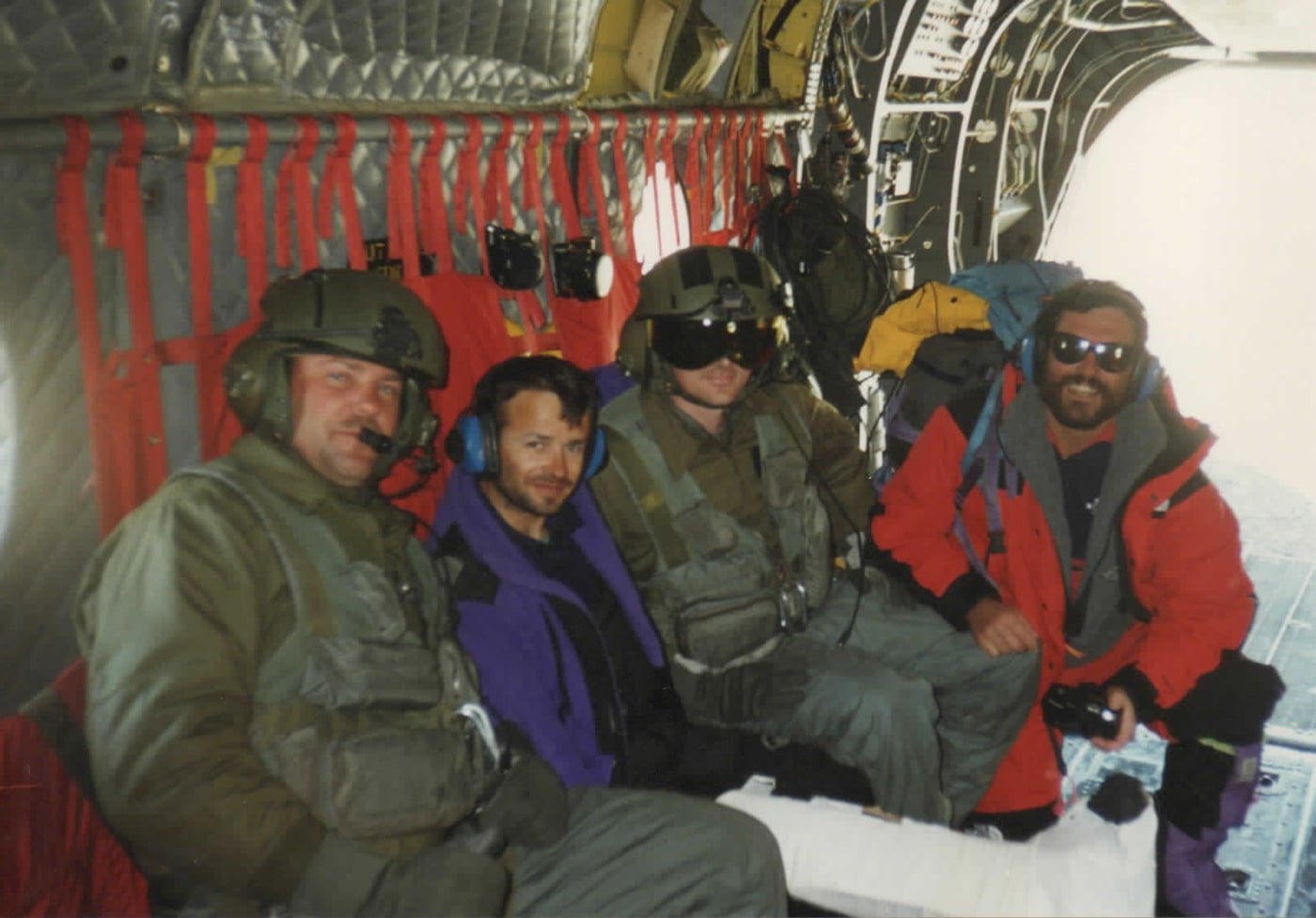
The author, in his flight gear with his visor down, is photographed with the Spaniards he helped rescue in 1996.
As the CH-47 is fully instrument capable, it can sometimes reach the mountain when the Lama cannot.
The Chinook is also equipped with a rescue hoist that offers capabilities not available to the smaller machine.
In 1988, the HART team set the world record for a helicopter hoist rescue at 18,200 feet.
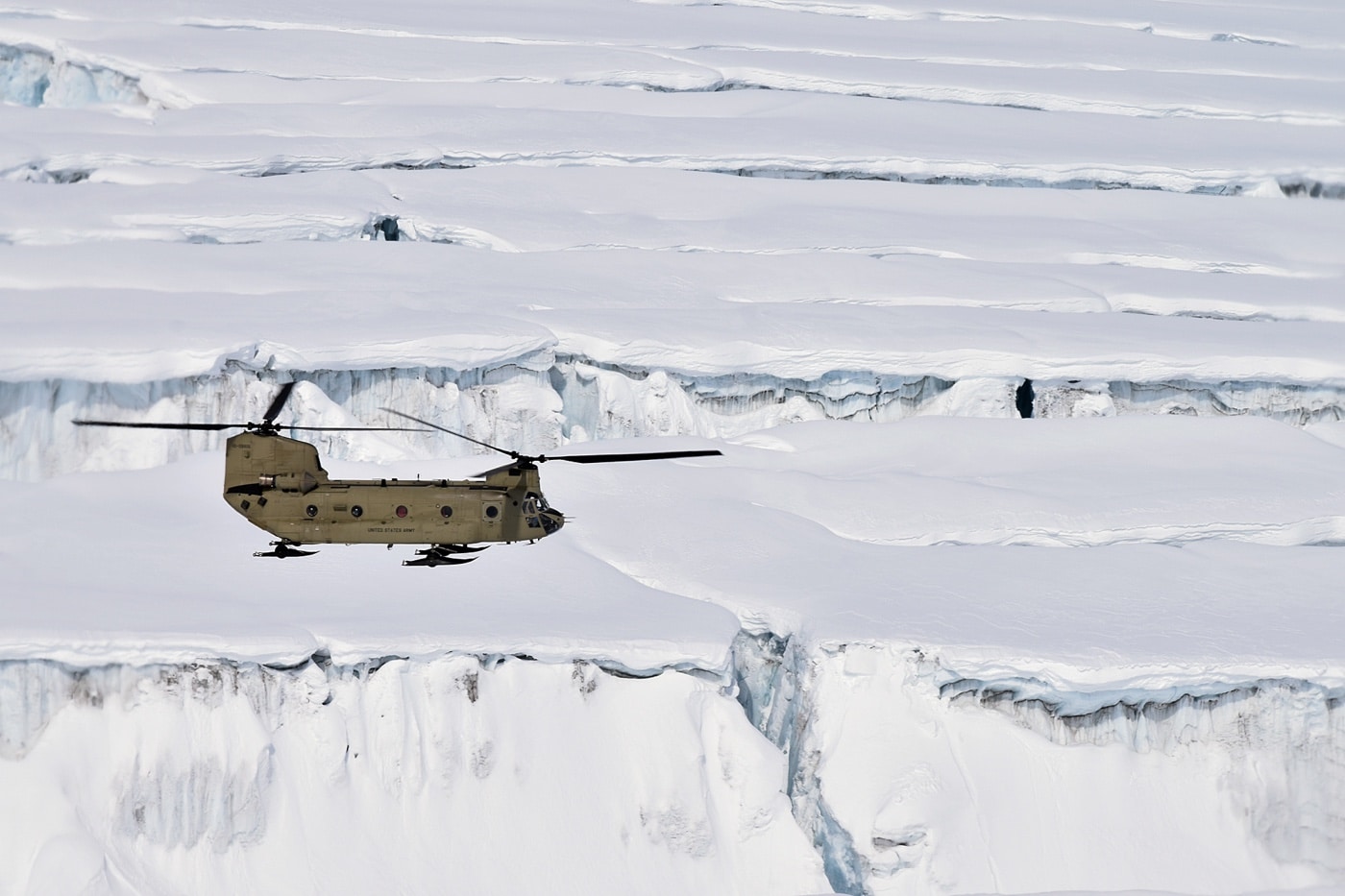
A CH-47F helicopter from D Company, 1st Battalion, 52d Aviation Regiment, flies along the crevasses of Kahiltna Glacier April 27, 2015. Image: John Pennell/U.S. Army
We always ascended the mountain in pairs.
The weather had been sketchy and getting to high altitudes had been a challenge.
At these sorts of altitudes, this is a catastrophic injury.
He explained that Garra had to be removed from the mountain or he could die.
The formal approval process for rescue support was laborious.
Each live mission had to be approved by the first General Officer in the chain of command.
However, they claimed we Army officers were supposed to show initiative.
Mr. Garra was soon strapped in alongside his climbing partner, a Spanish cardiologist.
Incidentally, I think that was the closest I have ever come to being kissed by a man.
That guy was pretty stoked to be getting off that mountain.
I flew home that afternoon assuming I had done a good thing.
My boss felt otherwise.
Once we got the aircraft shut down I was dragged into my commanders office for a proper butt chewing.
My on-the-spot decision had completely circumvented the chain of command.
I had allowed two foreign nationals onboard a U.S. Army aircraft without proper authorization.
The liability had been astronomical.
What if the aircraft had crashed?
What if there had been an in-flight emergency?
What if, what if, what if…
While I was getting reamed out, the phone rang.
It was the U.S. Coast Guard congratulating us for the rescue.
They wanted the names of the crew for the press release.
My boss hung up the phone and sighed.
He reluctantly congratulated me for saving a mans life but then directed me never to do it again.
It has been 27 years since that weird afternoon on Mt.
I left the Army soon thereafter and went to medical school.
Along the way I bought a laptop and tried my hand at writing.
Until I was researching this article I had never known Juanjo Garras name.
I sincerely hope he is well.




